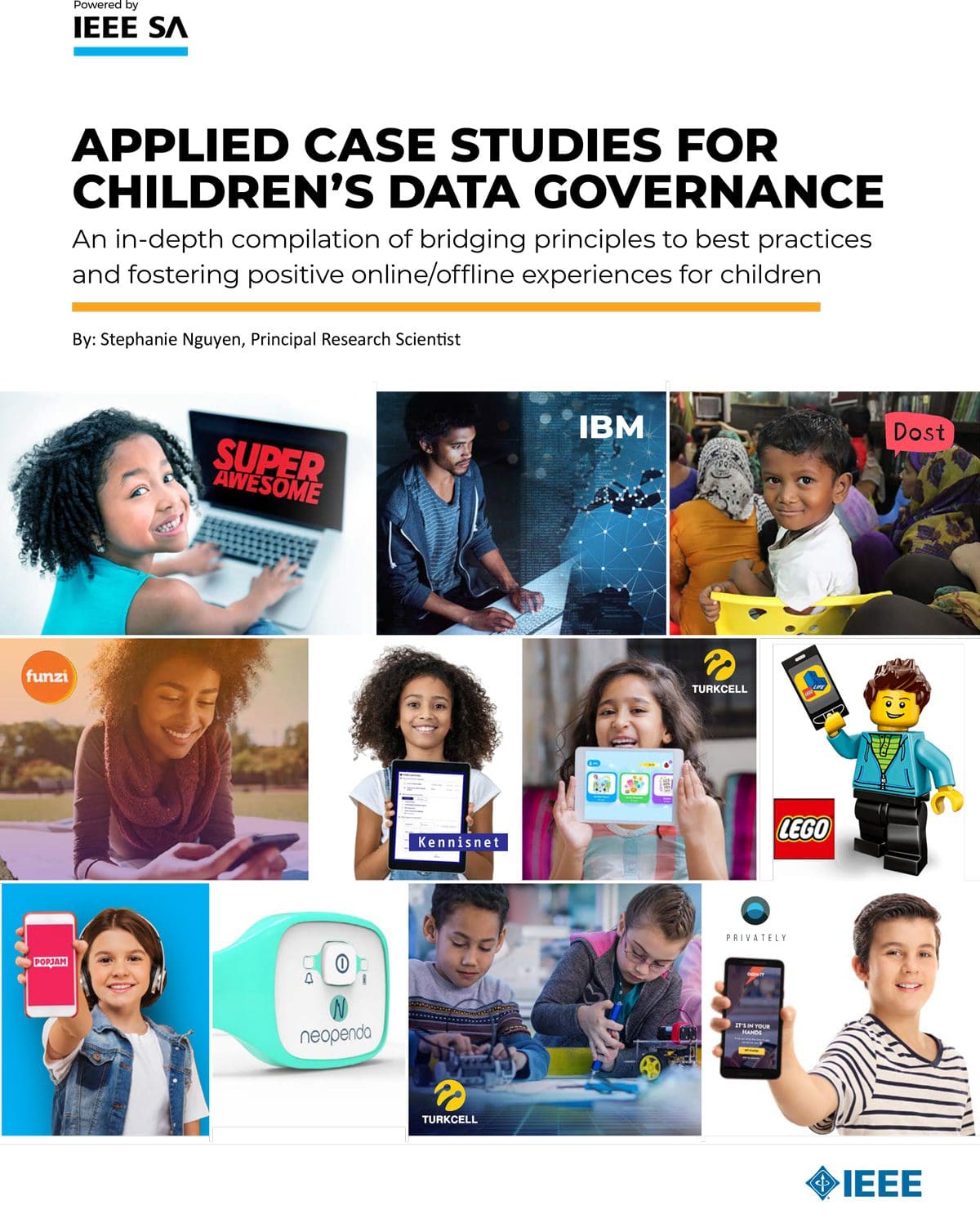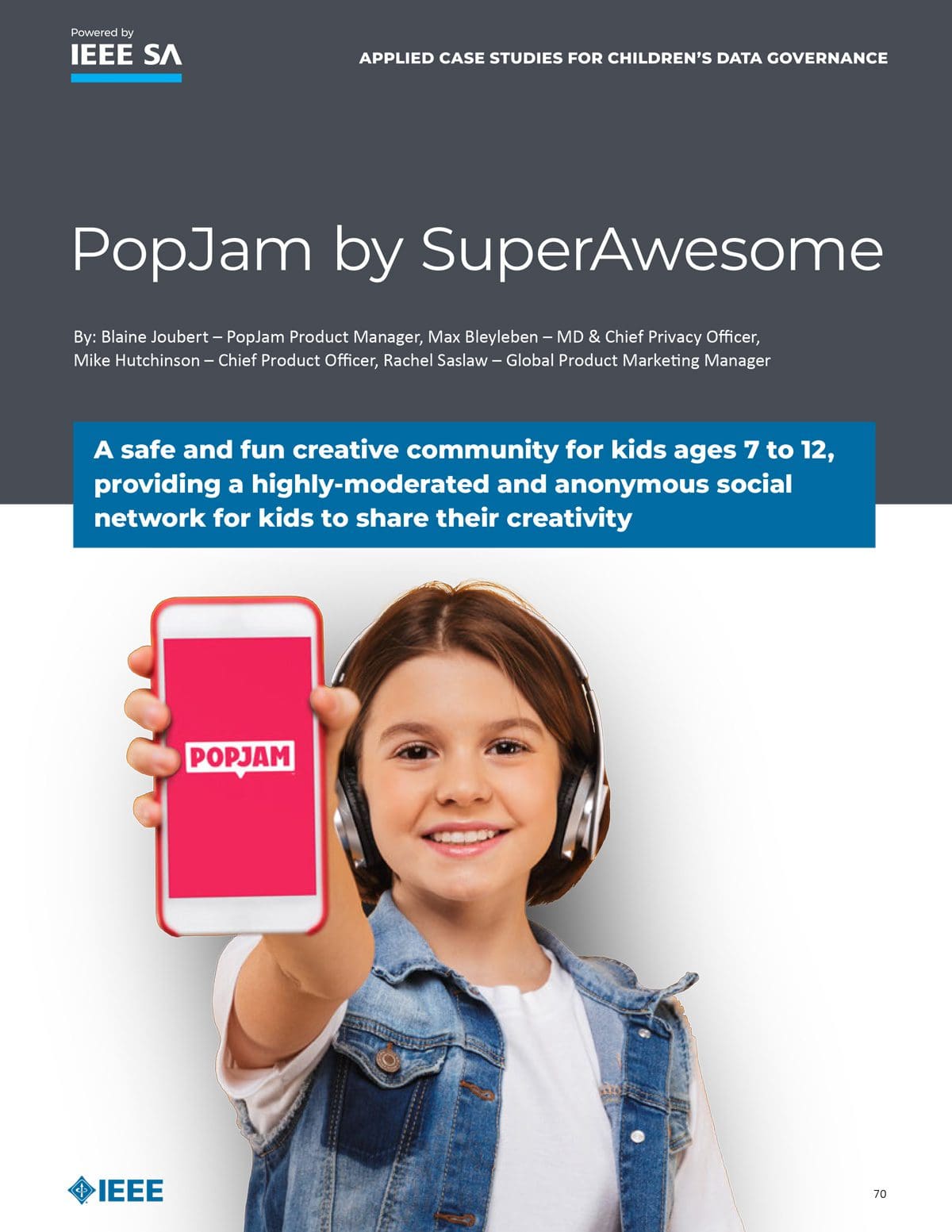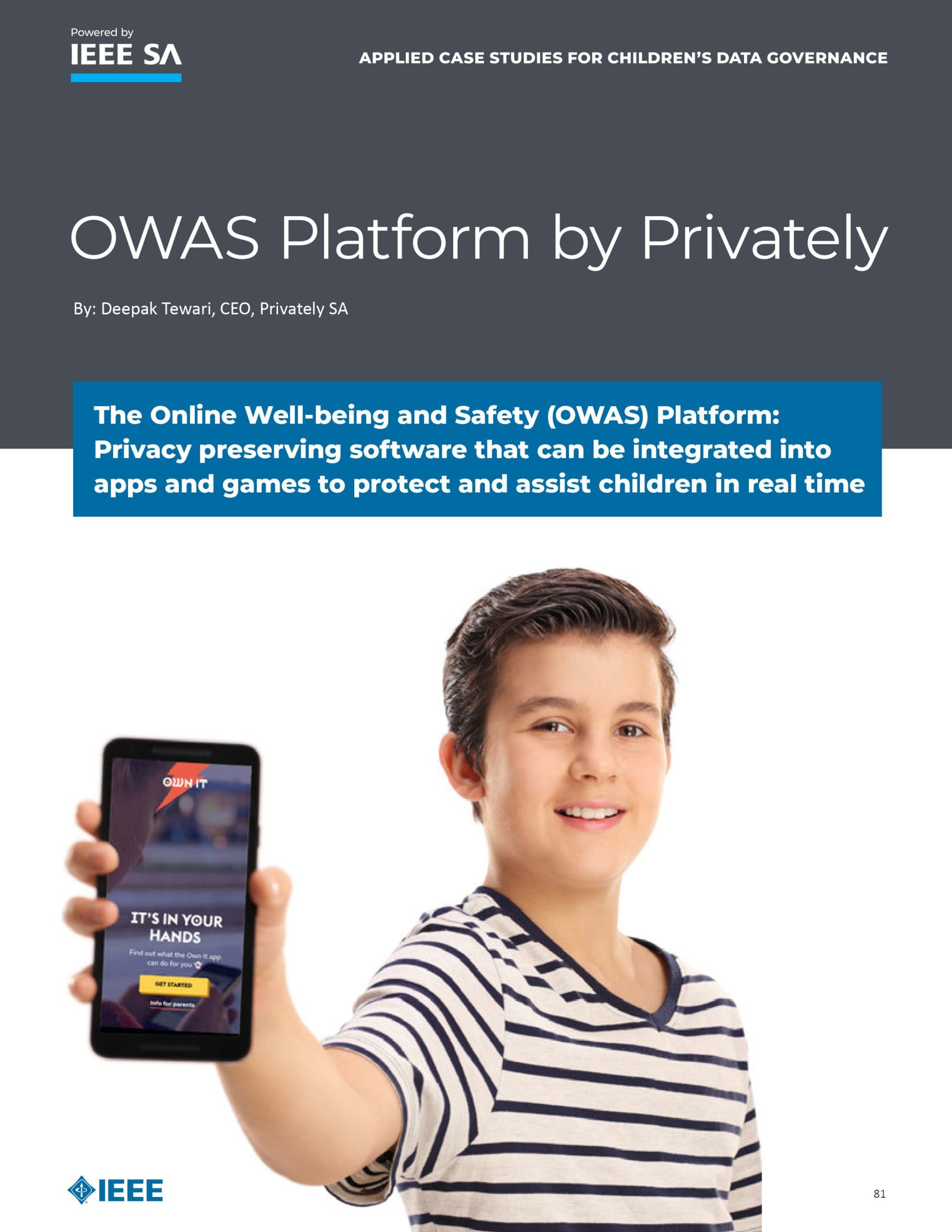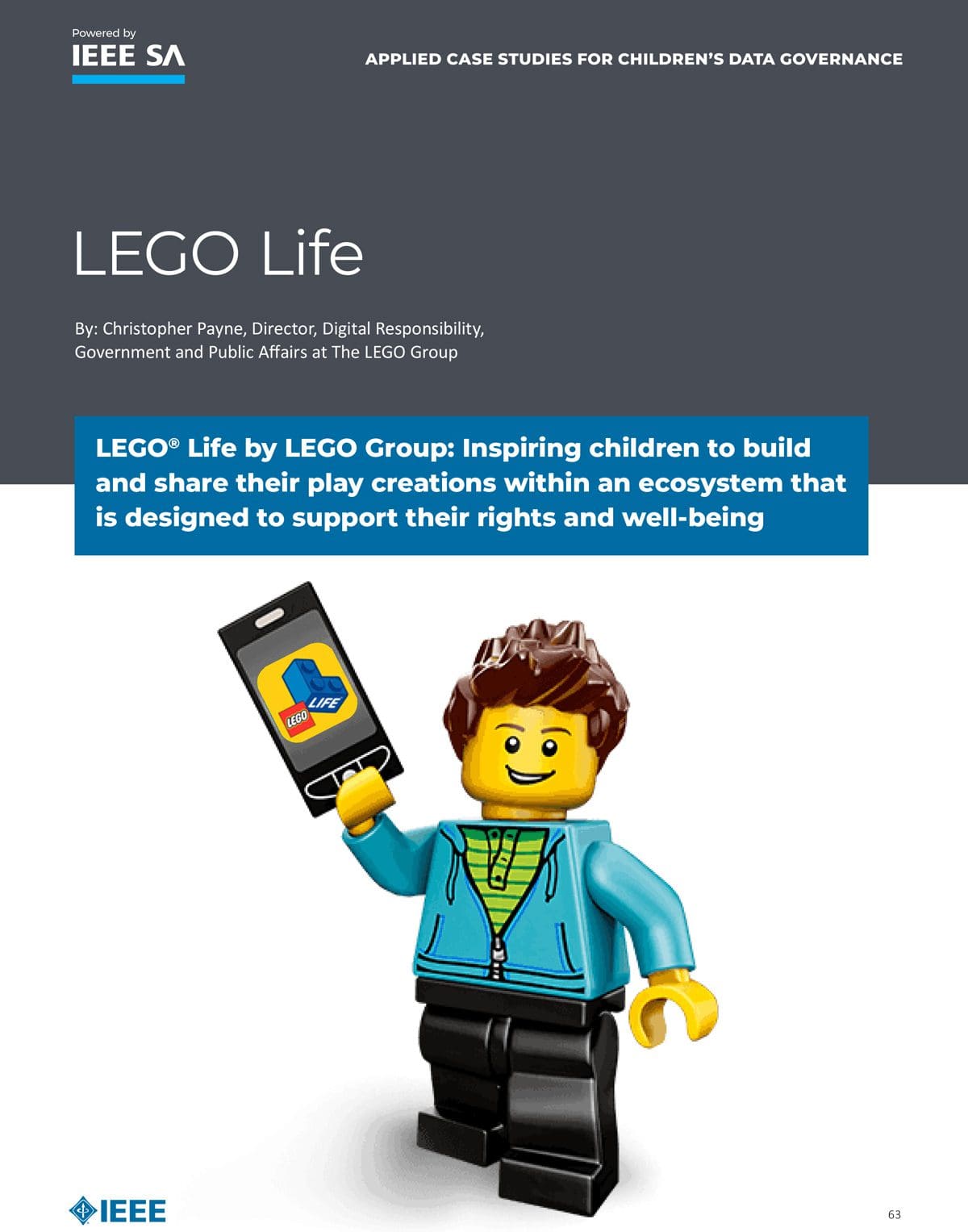Technology is now permanently intertwined with children’s lives almost from the beginning – from smart baby monitors to playing with connected toys, watching online videos, social media, using voice activated assistants, online education, and mobile apps.
An elementary-aged child’s day looks very different than even a decade ago, with technology woven throughout their entire life for school, play, and everything in between. They may start their day with a joke from a voice-based assistant, a video over breakfast, and their parents virtually tracking their bus ride to school on their smart watch. After school, they may use an app to add milk to the family’s grocery list, search online while doing homework, play with an internet-enabled remote-control car, and then play video games online with their friends.

Children are beginning to use technology at a younger age, and the amount of use has increased in recent years. According to a report by Pew Research Center, one-third of parents said their child began using a smartphone before their fifth birthday, and 80 percent of children under 11 regularly watch videos. The study also found that two-thirds of parents said parenting is harder now than 20 years ago, with many saying technology is the reason. With all this, it is imperative that we support an ecosystem of inclusive, trustworthy online and offline experiences, where children can communicate, play, and learn in a manner that suits their evolving capacities.
Reducing Risks Instead of Eliminating Benefits of Using Technology
While technology provides many benefits, especially in underserved communities, the increased usage and exposure also brings risk to children, as well as their data. Because the potential benefits and opportunities outweigh the risks, the answer isn’t to remove technology from children’s lives, but instead, find ways that organizations can help reduce the risks to children.
Additionally, invasive and exploitative uses of technology, especially those collecting data or with surveillance capabilities, can cause harm to children and their dignity. While age restrictions for technology and social media may seem to be a solution, the reality is that this route leads to some kids being excluded while others lie to sign up for platforms they want.
As part of our commitment to fostering dignity, inclusion, identity, trust, and agency in digital and cyber physical environments, the IEEE Standards Association (IEEE SA) released the Applied Case Studies for Children’s Data Governance. The in-depth report provides practical steps for organizations and developers of technologies for children, as well as real-life examples of technology designed to foster positive and trustworthy interactions for children.

By working to mitigate the risks to privacy, safety, and security, the goal is to enhance inclusion and opportunity and to help kids flourish. Additionally, the IEEE Trustworthy Technical Implementations of Children’s Online-Offline Experiences Industry Connections Program is currently working to identify solutions to govern and promote better practices for designing technology to be used by children.
Organizations Proactively Protecting Children’s Data Privacy and Safety
The Applied Case Studies for Children’s Data Governance report highlights numerous companies from across the world that are already meeting the standards of protecting children’s dignity through product design.
(The following cases were submitted by the respective contributors, and do not constitute content developed by IEEE. The organizations and products identified are for information, and inclusion in this report does not represent an endorsement by IEEE or IEEE SA.)
A few notable examples highlighted in the report include:
PopJam by SuperAwesome

As an alternative to kids lying about their age to gain access to grown up social media channels, PopJam puts safety and moderation policies in place to create a safer place for kids ages 7 to 12 to connect with friends and learn. The channel uses AI and human moderation to prevent inappropriate language, sharing pictures with faces visible, and metadata stored on photos that can provide location information. Because children’s data being shared with third parties is a big concern, PopJam does not send any personal information to the third-party analytics tools. Additionally, the site aims to teach kids about good internet habits by not being accessible from 11 pm to 6 am as well as automatically replacing personal information shared with emojis.
Online Well-Being and Safety (OWAS) Platform by Privately

Many app and software developers want to create products that are safe for children but don’t always understand all of the issues or have the knowledge of where to start. By using the Online Well-Being and Safety (OWAS) software development kit (SDK) developers can reduce harmful exchanges and content in their products. Using Natural Language Processing (NLP), content about self-harm, hate, profanity, and personal information are detected as well as images with nudity or sexual content. The SDK also lets apps use multimodal emotion and engagement analysis to get more context and help users express themselves.
LEGO Life

The LEGO Life app designed for kids 8 to 12 years old gives children a place to connect with others who are also interested in LEGOs, learn more about LEGOs and share their own creations. In addition to sharing drawings, stories, and photographs of their unique LEGO builds, kids watch videos about how to build, participate in build challenges and get behind the scene preview.
To make sure all content is appropriate, all posts are screened with AI and then manually reviewed when needed. To reduce inappropriate conversations and content, the app does not have private chat rooms and every child under 16 is required to go through a full verifiable parental consent mechanism to access the full experience. While using the app, a character named Captain Safety provides information and tips about online safety to help them learn in a fun and engaging manner. Additionally the site auto generates user names to prevent kids from using identifiable information and no third party links are allowed through the app.
Creating A Future that Respects Children’s Dignity Online
Because of the increased use of digital technology for conducting most tasks during the pandemic, many children are using technology and the internet even more, which likely translates to higher permanent use by kids. The conversation and attention on this issue is likely to increase in the near future, with the UK’s Age-Appropriate Design Code (going into effect in September 2021), which requires all companies or hosting websites creating products for UK kids to include more age-appropriate design practices and features in all digital services that are likely to be accessed kids.
IEEE SA also offers a free webinar series on the Children’s Data Governance Applied Case Studies from in the report to help professionals and organizations learn more about best practices. The webinars provide information on how to apply principles of age-appropriate, inclusive design, and data governance considerations to respect children’s rights. They cover the following topics:
- Enabling Trustworthy Online Social Engagements for Children
- Managing Children’s Data
- Enhancing Children’s Health, Wellbeing, and skills development in Remote or Underserved Settings
- Empowering Underserved Communities with Education and Skills-Building
By working to create standards and guidelines for organizations, the technology industry and children’s and youth rights advocates can make it easier for companies to create products that follow best practices for properly protecting children’s data privacy and safety.
To learn more about how your organization can use learnings and best practices from companies focused on trustworthy online and connected experiences for children, download the Applied Case Studies for Children’s Data Governance or watch the free on-demand webinars.

